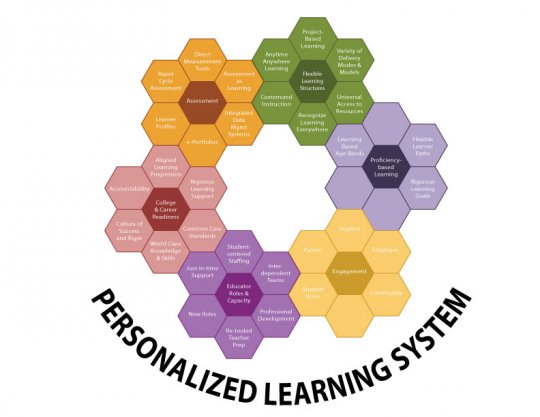Thought Leader Interview: Jim Rickabaugh
Jim Rickabaugh, Director of the Institute @ CESA #1, shared with me their region’s journey for the Personalized Learning Initiative. Southeastern Wisconsin is mobilizing as a region to transform public education through personalized learning for all students.
The Institute @ CESA #1 was established to work with 45 member school districts on a unique regional approach to transform public education in Southeastern Wisconsin into a system that is student-centered and personalized for each learner.
Almost three years ago, a group of superintendents in CESA 1 (Southeaster Wisconsin) discussed the combination of tight money, schools being blamed for things out of their control, and accountability that didn’t seem to make a difference. They all agreed “there’s got to be a better way.”
Jim Rickabaugh explained, “It seems like we were dismantling the systems we were charged to protect and the children we were supposed to develop. We then started on a journey on what could be done with a system.”
Turning from victim to action – we have to save our system.
They did a lot of research and concluded:
- That the system we have educating our children is not designed to do what we need to do for our children. Our teachers are working harder than ever. It is a design problem.
- As tight as money seems, there is a lot of money, yet it is tied up in a system that does not allow for flexibility.
“We wrote a white paper that laid out the arguments that gave us hope how a system can be redesigned instead of reform work tweaking the old system. Our initial inclination that the cavalry was not going to save us. The states are so tied to national accountability programs.”
Excerpts adapted from the Institute @ CESA #1 blog:
When significant changes are made to learning and teaching, the roles of students and teachers change. Organizations feel pressure as new ways of learning “bump up” against existing structures such as schedule, calendar, student groupings or grading practices. Stakeholders involved in personalized learning clamor for the flexibility necessary to truly transform public education into a student-centered environment. Conversations about changing existing structures then begin to take place.
These conversations may be difficult because changes to the status quo can be uncomfortable for those involved. However, because the models of innovation were fully explored and tested in the first two phases of change, a solid foundation has been laid. Those involved understand that structural changes are necessary in order to make the vision of getting learning right for all students a reality.
Generally it is after structural issues have been addressed that policies are changed, since the strength and purpose of policy is to stabilize a system and practices. In this last phase we will see an innovative system, fully transformed. To help frame the work, the Institute has developed a change strategy to guide our districts as they participate in the Personalized Learning Initiative, based on our honeycomb model. This strategy is based on change in three areas: learning and teaching, relationships and roles; and structures and policies, to be addressed in three subsequent phases.
The model started with the honeycomb system with a variety of iterations where they invited small teams, designed seminars, and developed informal coaching with rubrics and tools to think about the work. There were 3 waves. Wave 1 started with 10 projects. Each group pulled pieces of the model together to take partial parts of the honeycomb. They are now on Wave 3.
They created a virtual conference center for districts to collaborate around similar work, on demand video or audio conferencing, collaborative work on documents, face-to-face opportunities, and hosted convenings all around Personalized Learning.
Thank you Jim Rickabaugh! We will be following you and looking forward to sharing the stories from your region and the Institute @ CESA #1.





